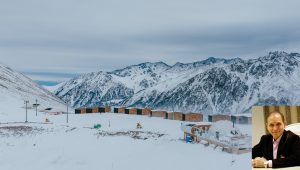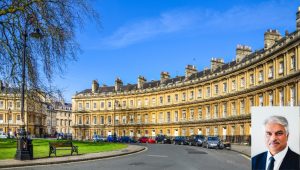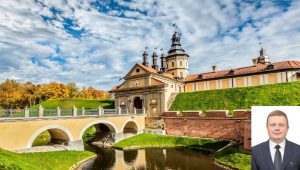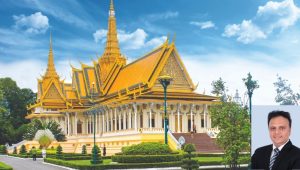BRAZIL – A KALEIDOSCOPE OF NATURE, CULTURE, AND ADVENTURE
One of the most captivating places on the planet, Brazil is blessed with powdery white-sand beaches, cool mountains, verdant rainforests, and historic colonial towns and buzzing metropolises. From the outstanding cityscapes of Rio de Janeiro to the colonial allure of Salvador and the natural wonders of Manaus, each city in Brazil has its own distinctive personality and a treasure of celebrated attractions
By H.E. Mr. José Borges dos Santos Júnior, Ambassador of Brazil to Thailand
Brazil has incredible places all around the country. With its unique cuisine, rich culture, some of the most beautiful beaches in the world, breathtaking waterfalls, and adventure for everyone’s liking, all you have to do is choose the best type of tourism for you and be amazed by the wonders of this beautiful South American country.
Nature and Outdoor Activities
Home to beautiful landscapes and endless natural resources all over its territory, Brazil is one of the best ecotourism destinations in the world. The amount of activities available for visitors is impressive, including wildlife and nature observation, hiking, sports fishing, horseback riding, cave visits, and much more.
Culture
Brazil is a melting pot of indigenous and foreign cultures. It is easy to recognise the influences of Europe and Africa, but some distant Asian countries, such as Japan, have also laid important bricks in the building of the Brazilian identity.
The country’s rich history also has left an impressive cultural heritage. In different regions of the country, visitors will be able to experience different customs, traditions, and musical styles that are unique to each place.
Gastronomy
Brazilian cuisine is not only historic, but also varied, tasty, and part of the different cultures all around the country. In fact, some dishes and recipes are exclusive to some regions, while other types of food are quite traditional all over the country.
Sun and Beach
Brazil is blessed with a coastline that stretches for more than 7,000 kilometers, and that translates into beautiful beaches all over the country. In each of these amazing beaches, you will be able to experience the sun, energy, beauty, and joy of Brazilians.
NORTH REGION
In the north of Brazil, you will find the largest tropical rainforest in the world, the Amazon, as well as the Amazon River Basin, the largest drainage basin on the planet. Fall in love with incredible destinations such as Manaus and the freshwater beaches of Alter do Chão.
Manaus
Manaus is a charming and cultural city. The green Amazon Forest, the dark waters of Rio Negro, the muddy waters of Solimões River, exotic local cuisine, diverse architecture, and very welcoming people are some of the city’s treasures. One visit is all it takes to fall in love with the capital of Amazonas State.
Located in the heart of the Amazon Forest, Manaus inherited beautiful buildings from the days of the Rubber Boom (a period of great economic and social growth in Brazil), which were built with fine materials imported from Europe. The Amazonas Theater stands out in this category, with a colourful dome made with 36,000 enamelled ceramic tiles.
Alter do Chão
The white-sand beaches on the banks of the Tapajós, a river with fresh, warm, blue-green waters, are one of the main attractions of this charming destination surrounded by breathtaking nature.
A beautiful beach town, Alter do Chão was described as one of the best beach destinations in Brazil by English newspaper The Guardian. The village is situated just 38 km from the city of Santarém, in the middle of the Amazon.
NORTHEAST REGION
The Northeast of Brazil boasts the longest coastline in the country, and has breathtaking landscapes and incredible natural beauty. Two of its many highlights are Salvador and Fernando de Noronha.
Salvador
Salvador is the capital of the state of Bahia, a place renowned for its natural beauty, friendliness of its people, and the strong influence of African culture, which is felt in cultural expressions like capoeira, a mixture of martial art and dancing, music and the local cuisine. People in Salvador really know the true meaning of enjoying life, and the city hosts one of the country’s most famous carnival celebrations.
The Historic Center of Salvador is a place where visitors will find streets and architectural monuments that date back to Colonial Brazil, the Empire, and the First Republic.
The neighborhood of Pelourinho (added to UNESCO’s World Cultural Heritage List), is home to historic monuments from the period between the 17th and 19th centuries, making it a very popular destination with tourists looking for museums, theaters, churches, musical performances, local cuisine, and handicrafts.
Fernando de Noronha
The perfect combination of crystal-clear waters, golden sand, and rich marine life that amazes people from all around the world, Fernando de Noronha is one of the best places in the world for scuba diving. Comprising 21 islands and islets, this archipelago is a place of indescribable beauty and importance, earning a place on the UNESCO World Natural Heritage List. It is very common to see the names of Fernando de Noronha’s beaches listed among the most beautiful in Brazil and in the world. The beach of Sancho Bay (Baía do Sancho) was twice voted the best beach on the planet by TripAdvisor’s Travelers’ Choice Awards.
MIDWEST REGION
The Brazilian Midwest, where the capital of Brazil, Brasília, is located, has breathtaking landscapes in destinations such as Bonito, with its crystal-clear rivers, Chapada dos Guimarães National Park, Chapada dos Veadeiros National Park, and Pantanal National Park, a UNESCO World Natural Heritage Site.
Brasília
Brasília is a planned city built in the 1950s and its beauty lies in its details, designs, and colours. The new capital was an audacious project and became the symbol of urban planning and modern architecture in the 20th century. The idea of building a new capital was to populate the centre of the country and keep the capital away from possible attacks from foreign ships on the coast.
Home to more than 3 million people, Brasília’s basic design, called Pilot Plan (Plano Piloto), was conceived by urban planner Lúcio Costa and architect Oscar Niemeyer. The design resembles the shape of an airplane and has been added to UNESCO’s World Cultural Heritage List. It is the city with the largest area on the Heritage List in the world.
Bonito
Bonito is a true paradise where visitors can experience rivers with crystal-clear waters and the contrast of the colourful fish against the intense green backdrop of the native forests. Its name means simply “beautiful” and it has many attractions, such as the Lago Azul Cave (blue lake cave), Mimoso Cave, the Natural Aquarium, and the Sucuri River (Anaconda River).
Visitors will have a lot of contact with nature as well as peace and quiet. Available activities in the region include rafting, floating (snorkeling) in small natural lakes, tree climbing, visiting waterfalls and caves, hiking, tubing and scuba diving.
SOUTHEAST REGION
The Southeast of Brazil is where the world famous city of Rio de Janeiro is located, but that is not all it has. You can experience other incredible destinations, such as São Paulo, with its cosmopolitan diversity, the historic city of Ouro Preto, the charming Vitória, capital city of Espírito Santo, and many others.
Rio de Janeiro
Stunning natural attractions, the spontaneity and hospitality of the local people, who turn everything into a celebration, and world-famous iconic monuments, this is what makes Rio de Janeiro an unforgettable destination. The combination of the beaches, mountains, forests and the city buildings and streets create a unique beauty unmatched anywhere in the world. It was the first city in the world to be added to UNESCO’s World Heritage List under the Cultural Landscape category.
If you want to really feel the energy of Brazilian people, there is nothing better and more traditional than to enjoy Carnival in Rio, when you both watch the samba schools parading at the sambadrome or take part in street celebrations, since each neighbourhood in the city has its own favourite carnival bands.
São Paulo
São Paulo is a national reference in history, business, culture, and tourism. Due to internal migration from other states and immigration from several countries in its early days, São Paulo is the most cosmopolitan city in Brazil. The city has countless movie theaters, cultural centres, museums, historic buildings, parks, theatres, and art galleries, but also one of the ten best nightlifes in the world, according to CNN, and is known as Latin America’s Capital of Fine Cuisine.
SOUTH REGION
Home to large German and Italian descendant communities, the South of Brazil also has many of its most beautiful natural landscapes, like the island of Florianópolis and the Iguaçu Falls.
Florianópolis
Containing around 100 beaches, Floripa, as it is commonly known, is perfect to practice water sports such as surfing, kite surfing, and sailing. Visitors will notice the strong influence of Portuguese and Azorean colonisers in the city’s architecture and local cuisine, as well as in its cultural and religious events. Part of the city is a natural preserve that includes unspoiled beaches surrounded by beautiful hills covered in native Atlantic Forest vegetation.
There are many points of interest in and around the city, some of which are the beautiful Conceição Lagoon, the peaceful Peri Lagoon, the traditional Historic City Center, the popular Public Market, the cosmopolitan Beira-Mar Avenue, and the rustic Azorean neighbourhoods of Santo Antônio de Lisboa and Ribeirão da Ilha.
Foz do Iguaçu
Foz do Iguaçu is one of Icons of Brazilian tourism thanks to the 275 majestic waterfalls that make up Iguaçu Falls. On the border between Brazil and Argentina, the Falls attract millions of visitors every year from all over the world.
Having earned a place on the UNESCO World Natural Heritage List, the waterfalls were also voted one of the World’s New 7 Wonders of Nature. The park is also home to several endangered plant and animal species, such as the Jaguar and the Paraná Pine Tree (Araucária). Visitors to the area are able to see the 90-meter-tall Garganta do Diabo (Devil’s Throat), the tallest waterfall in the ensemble, really up close.















